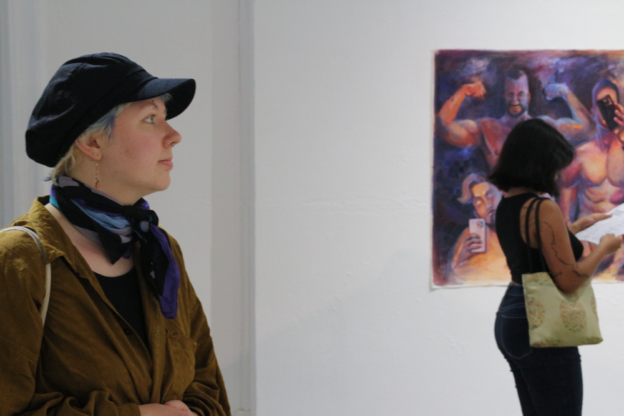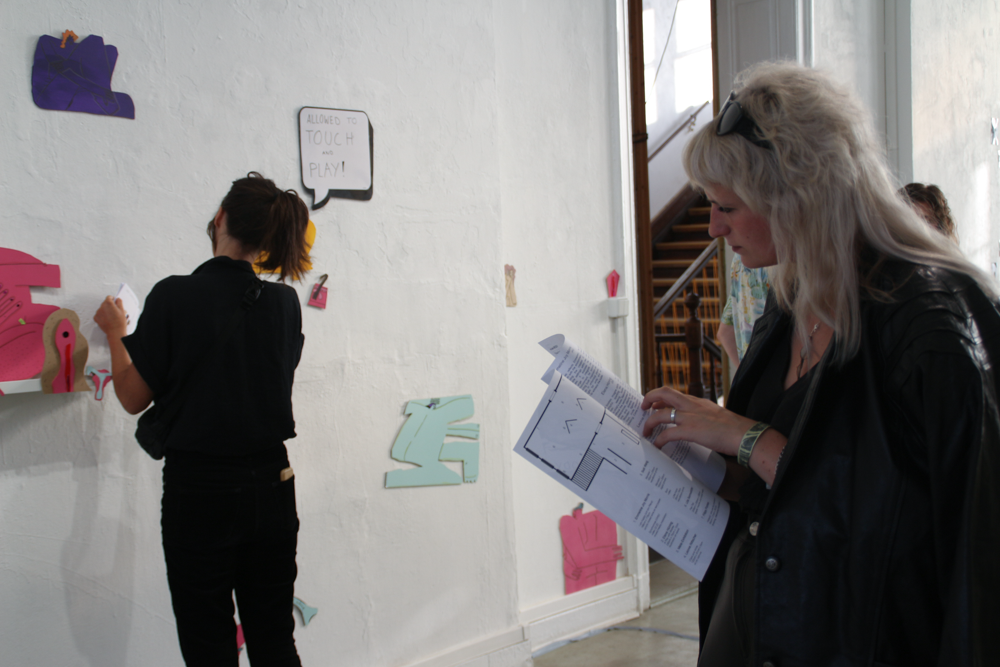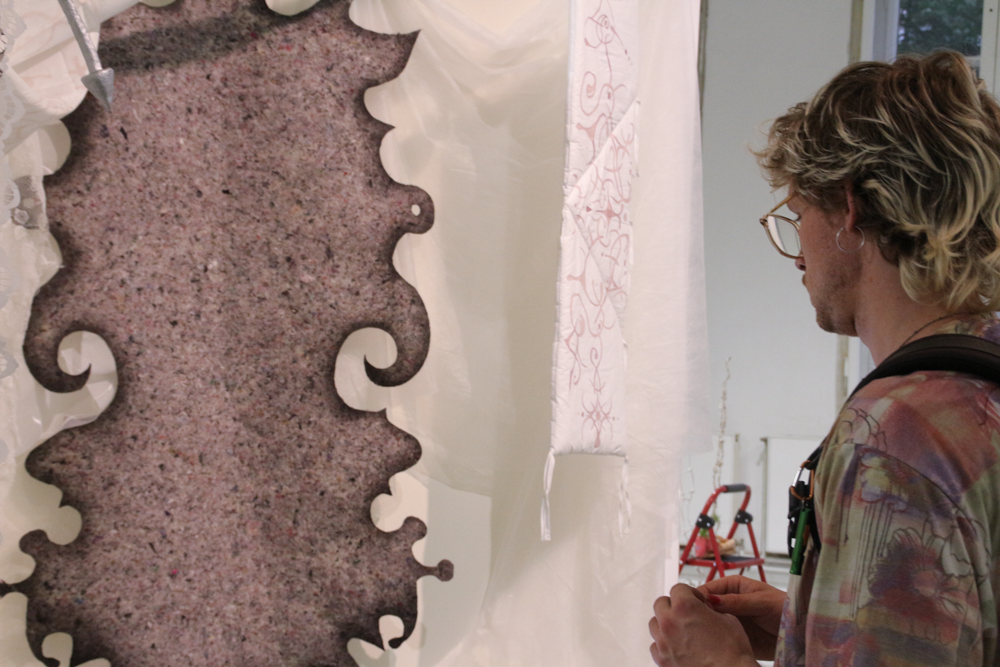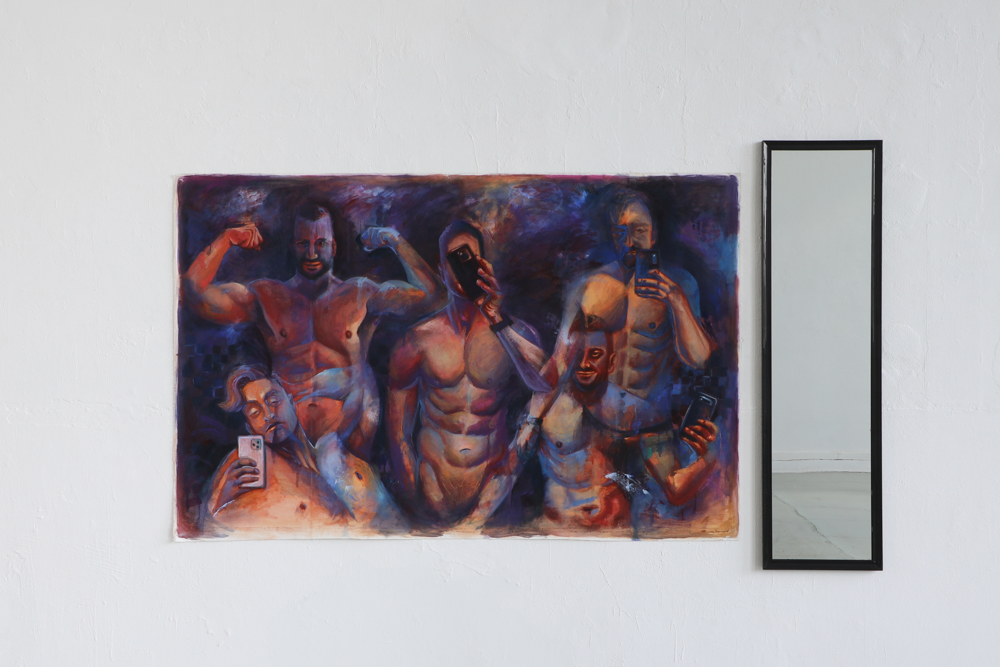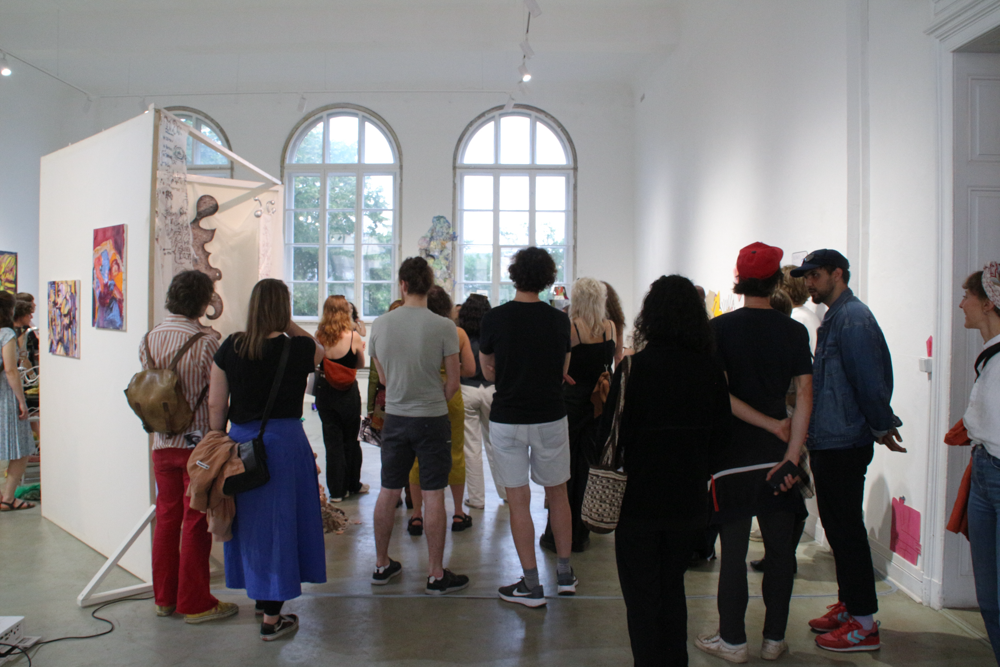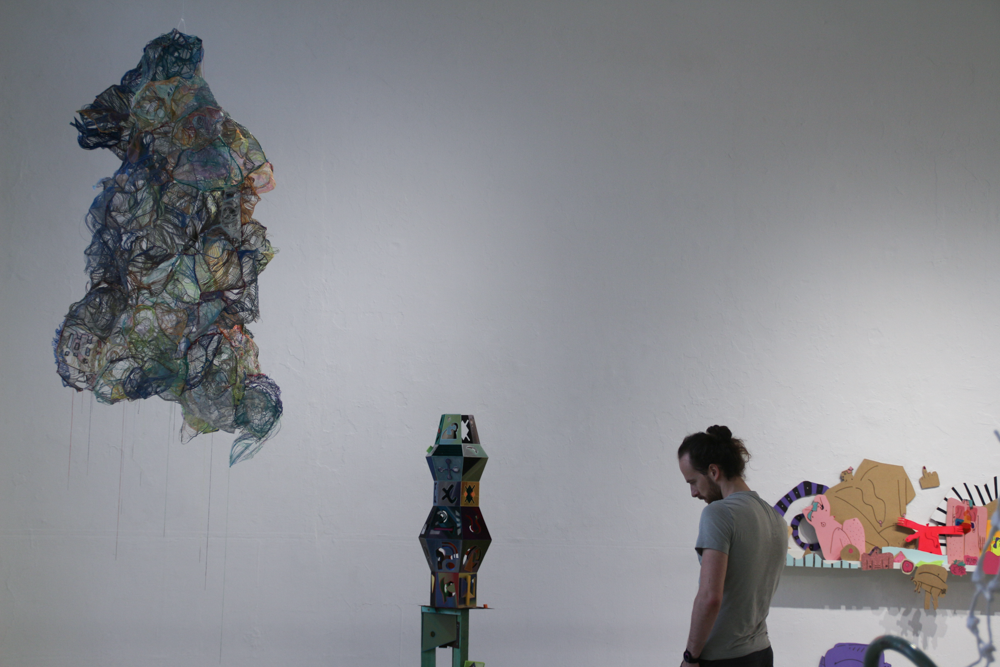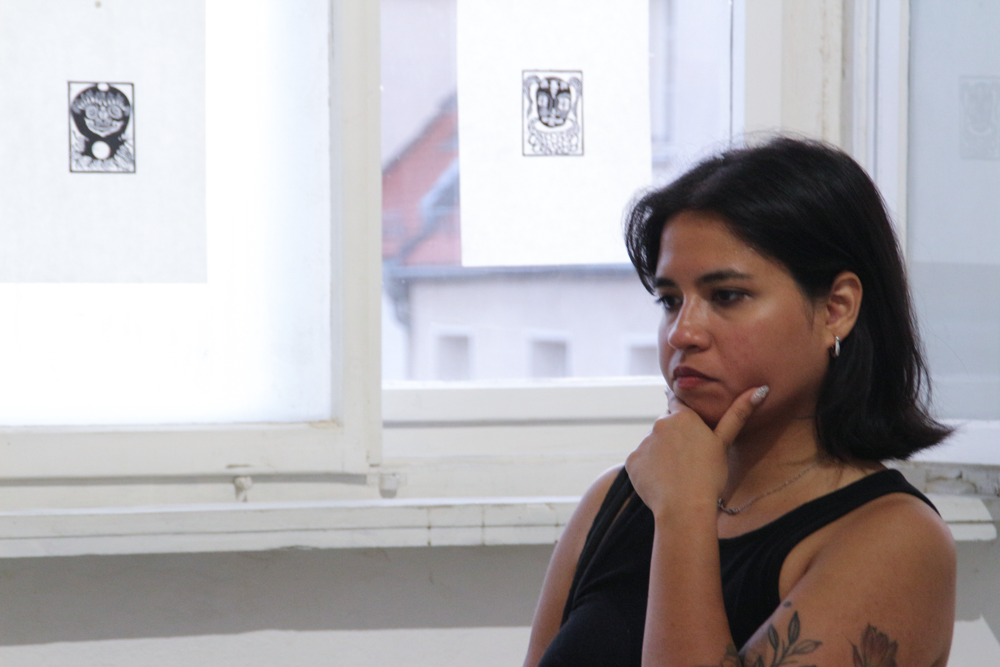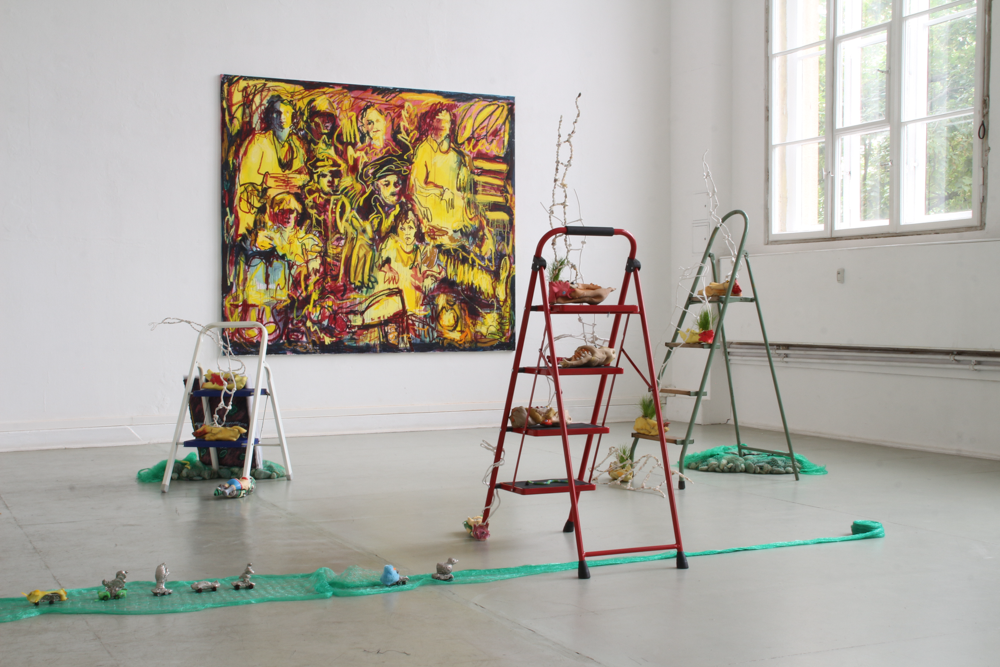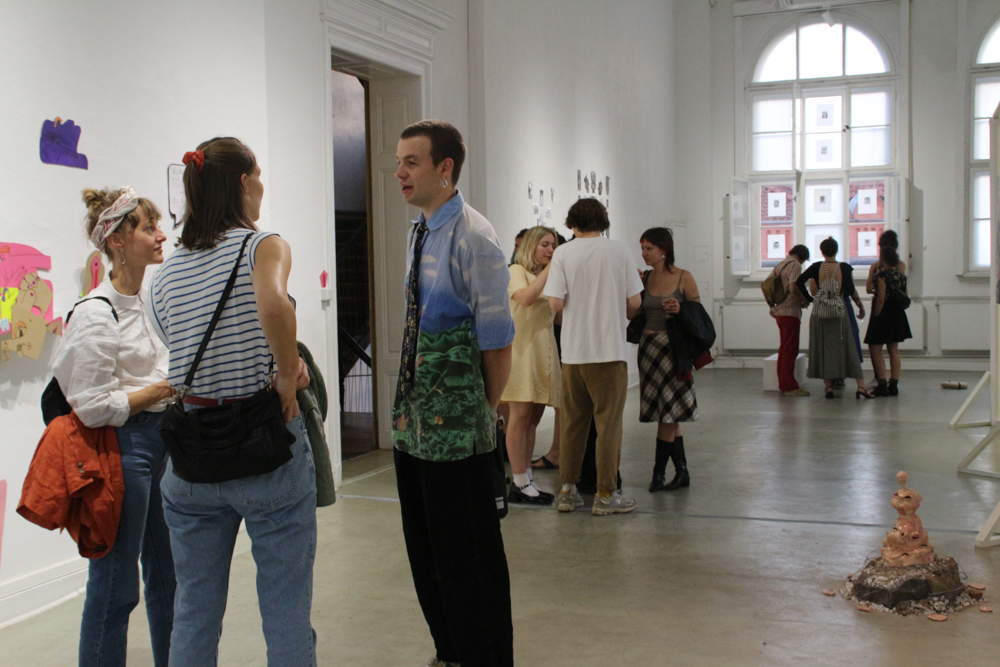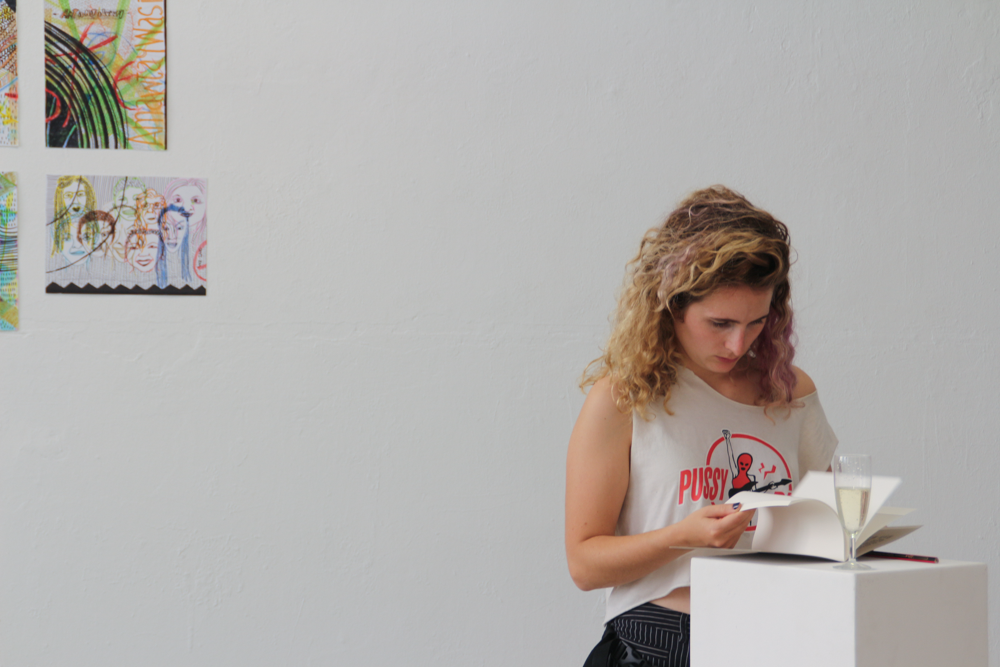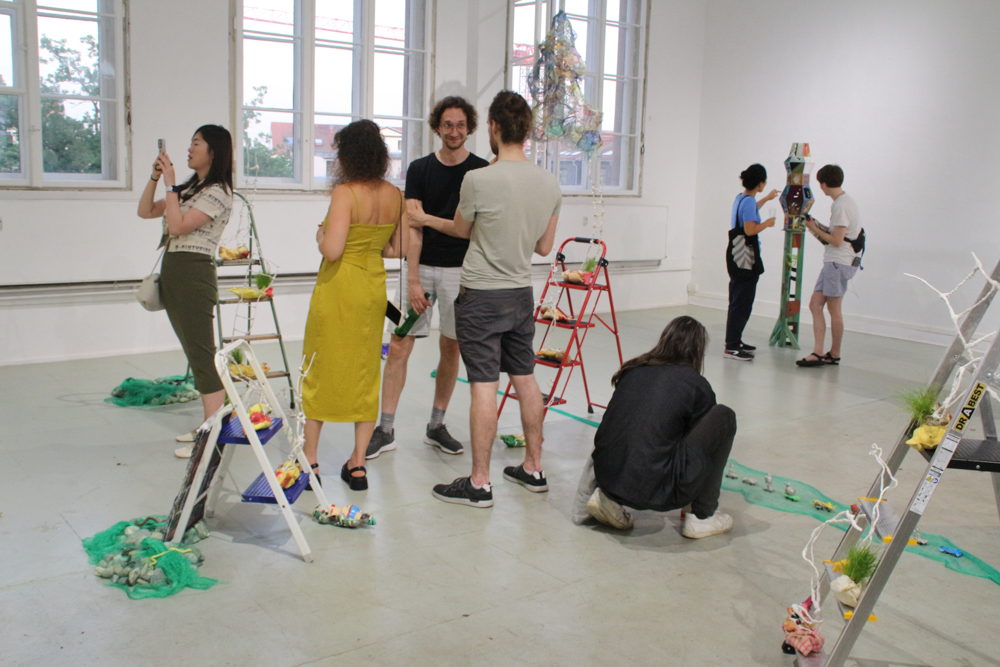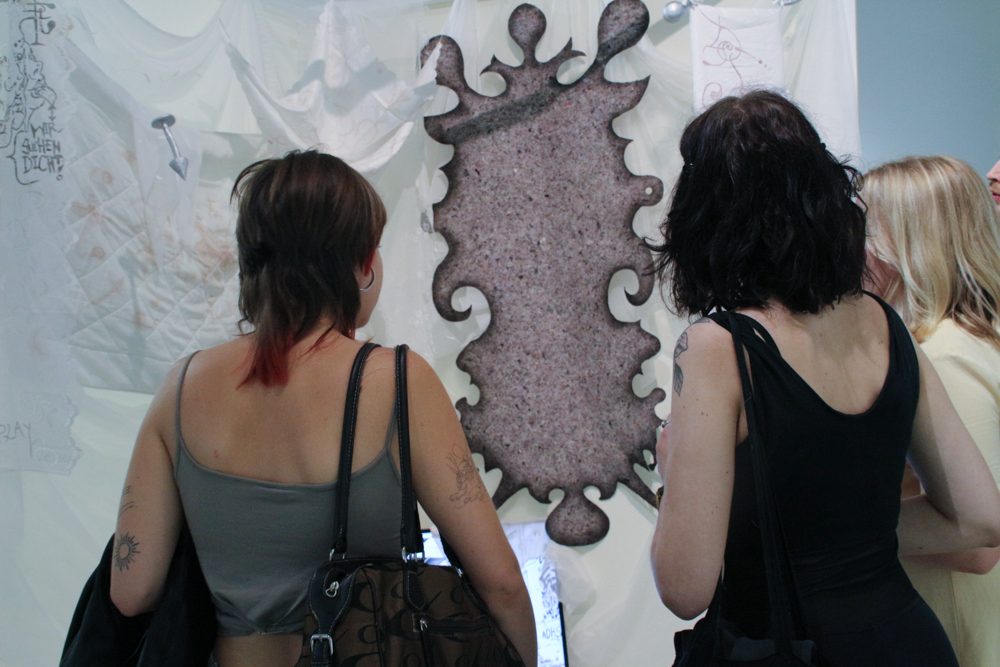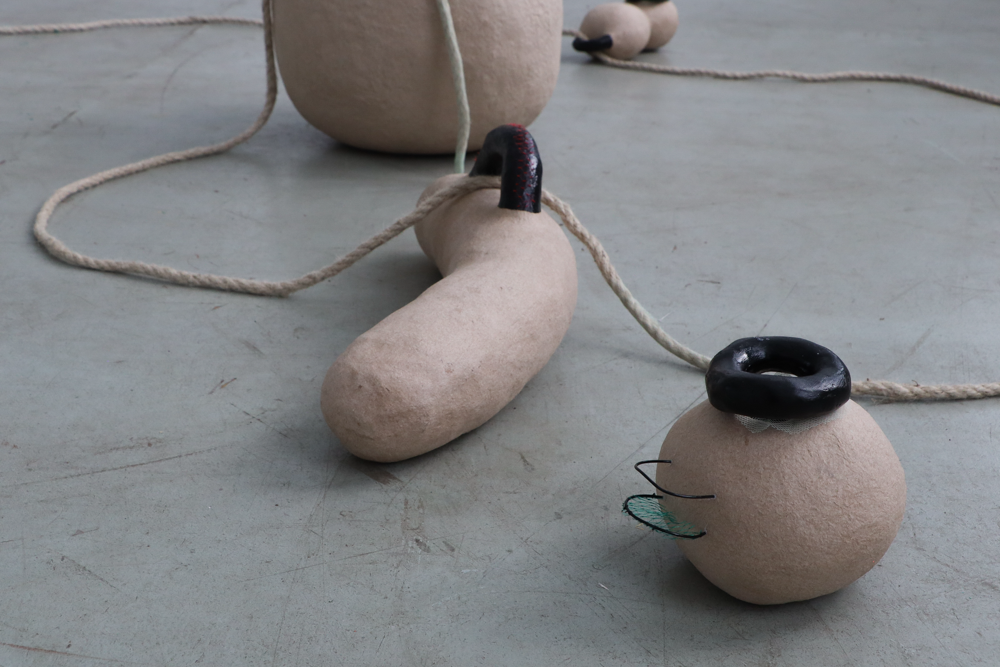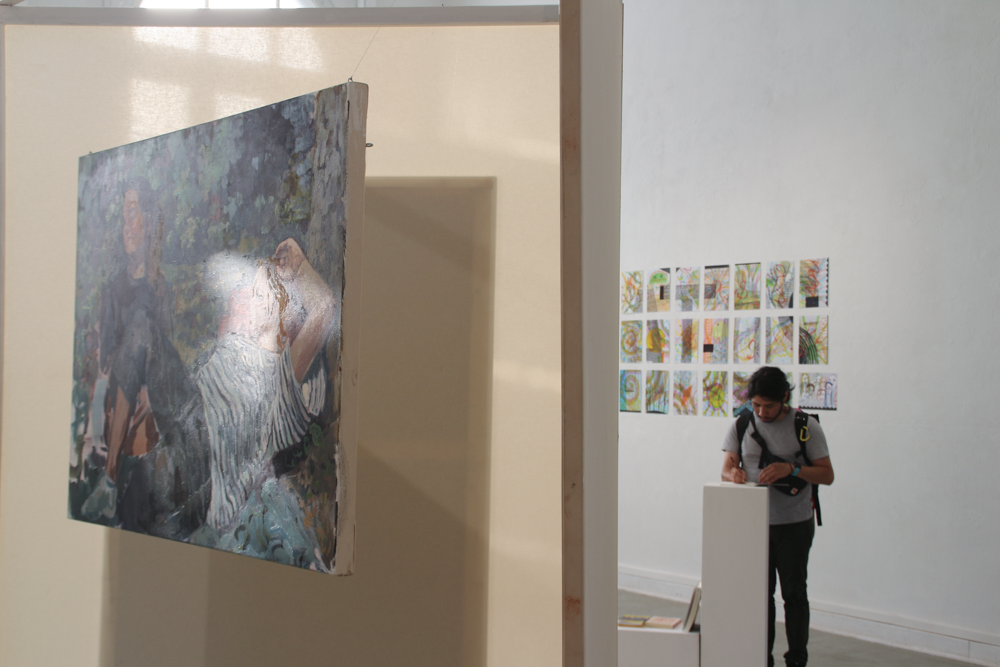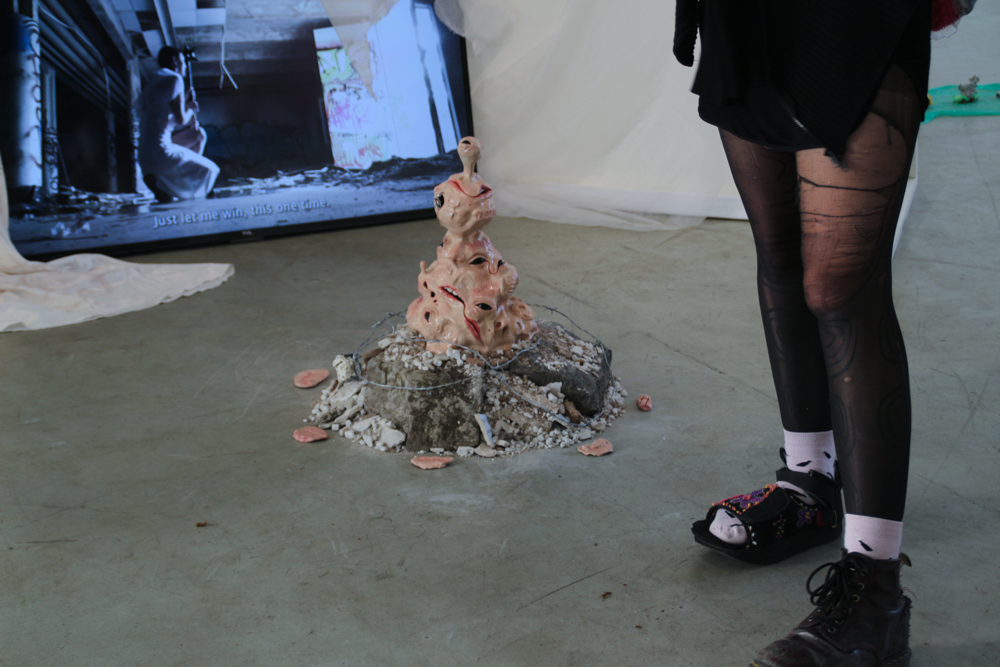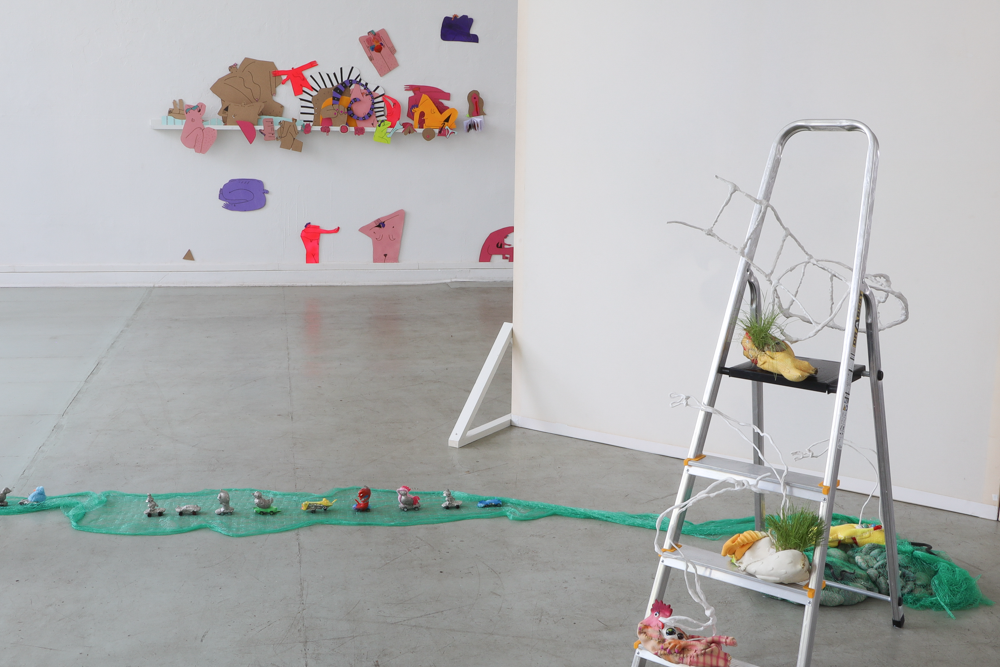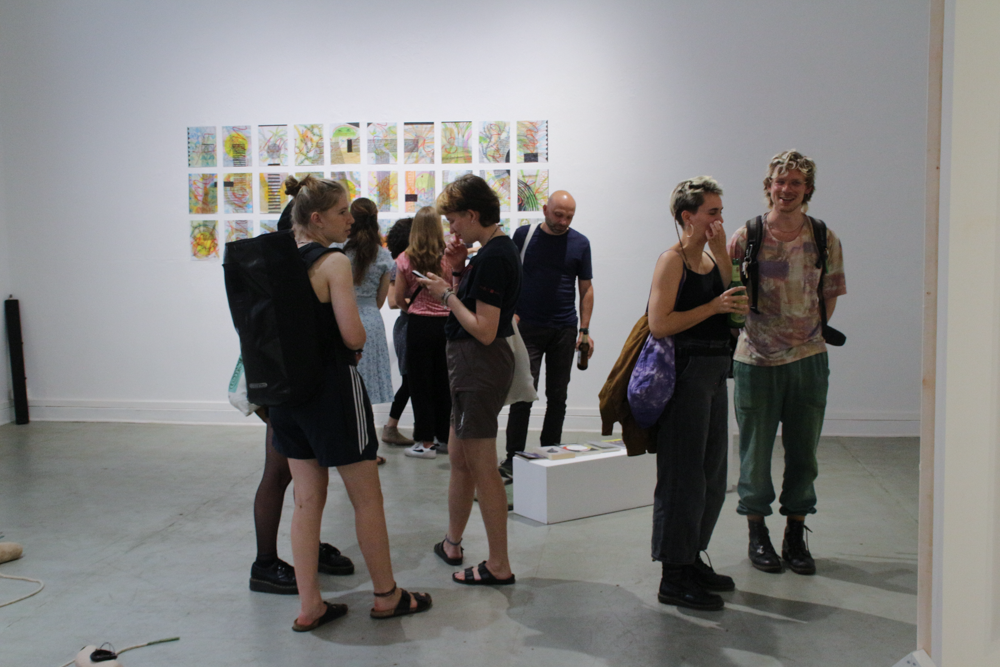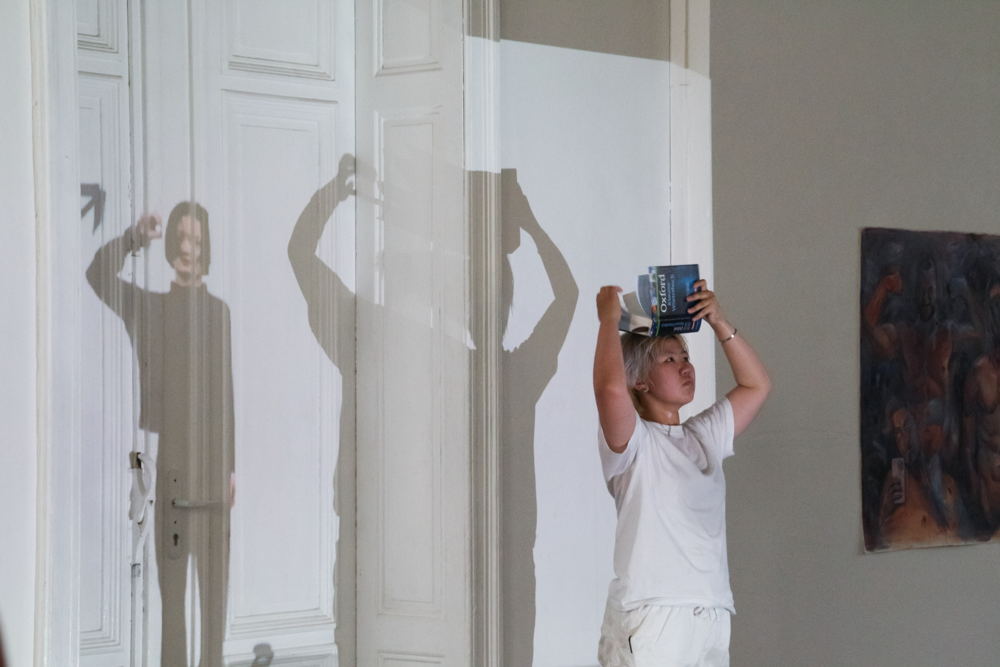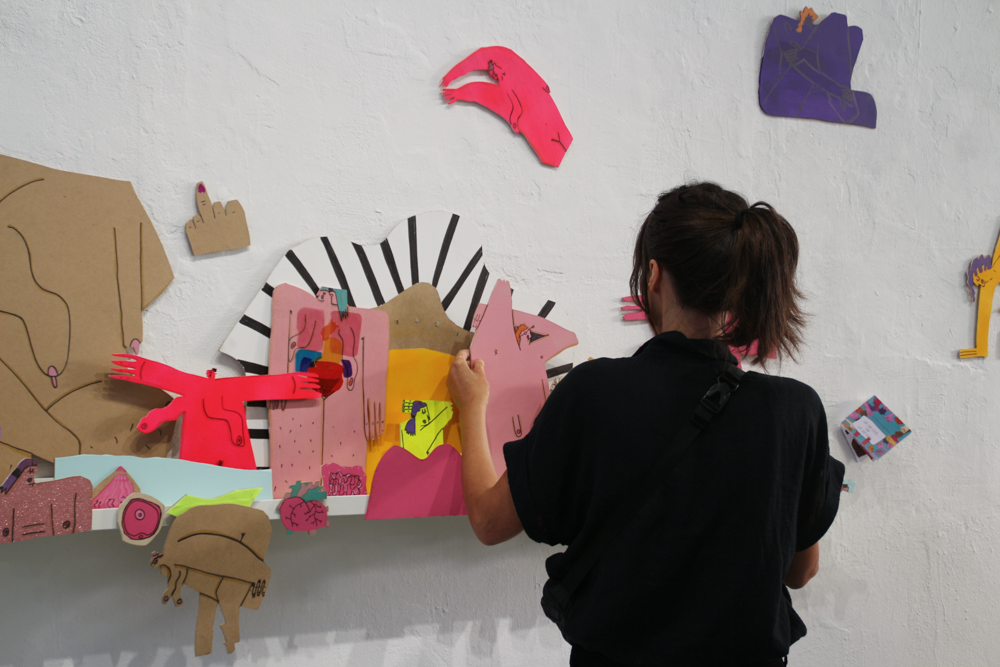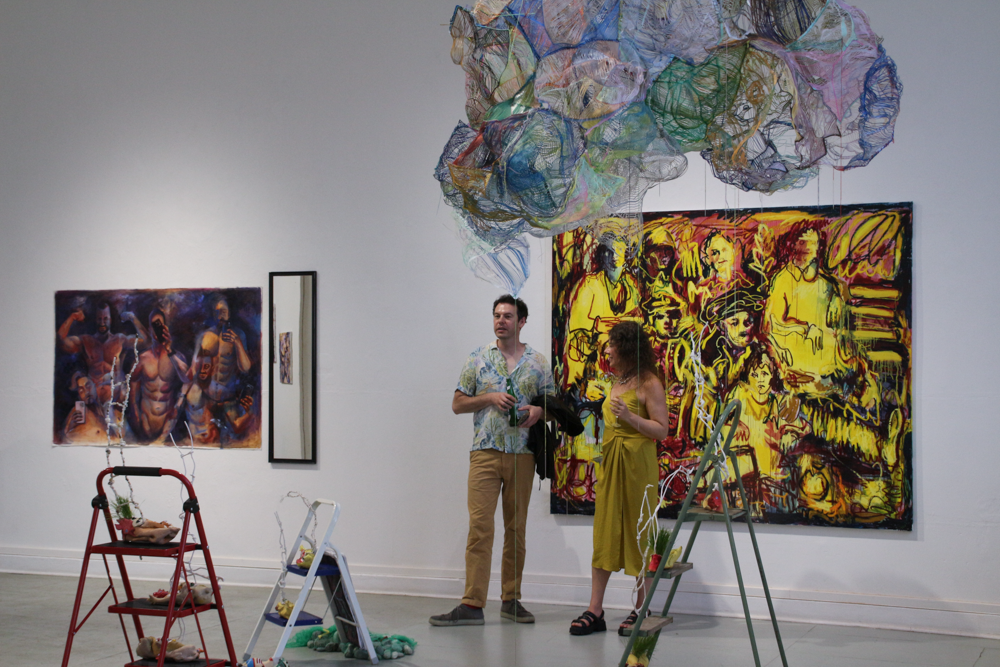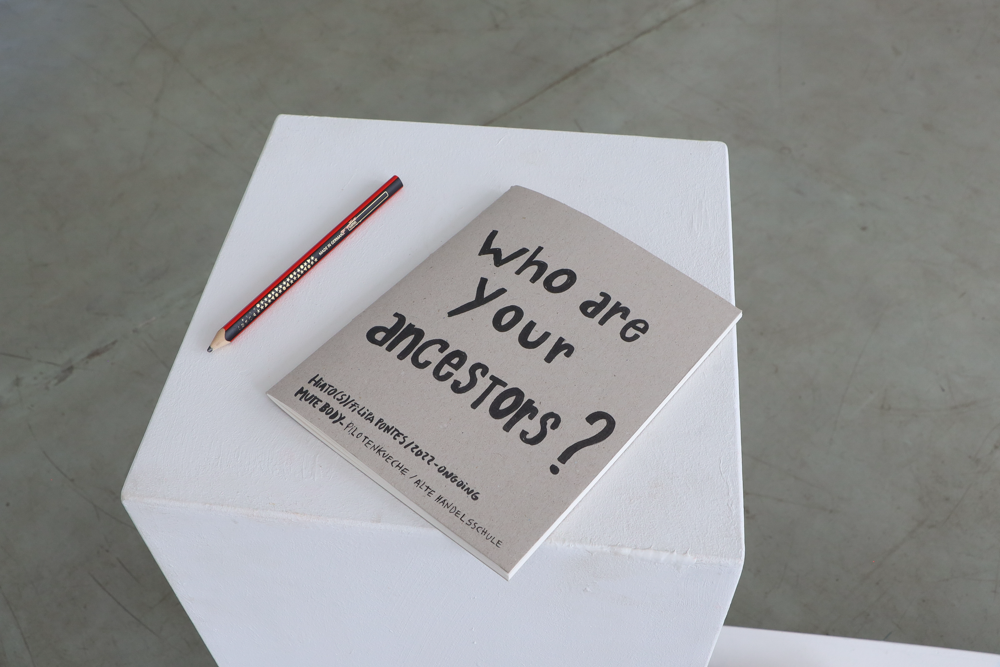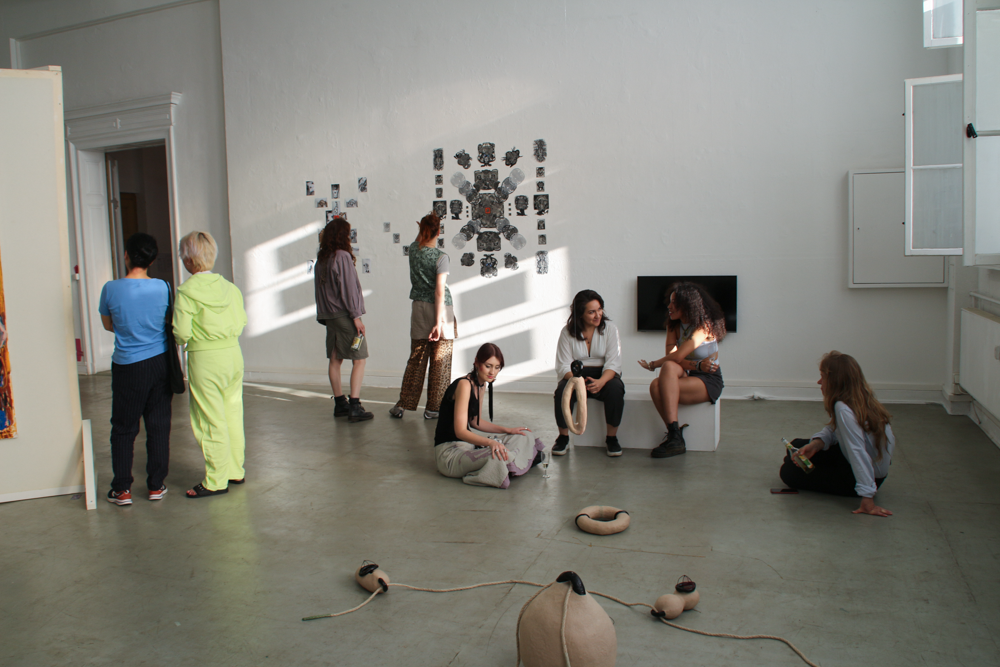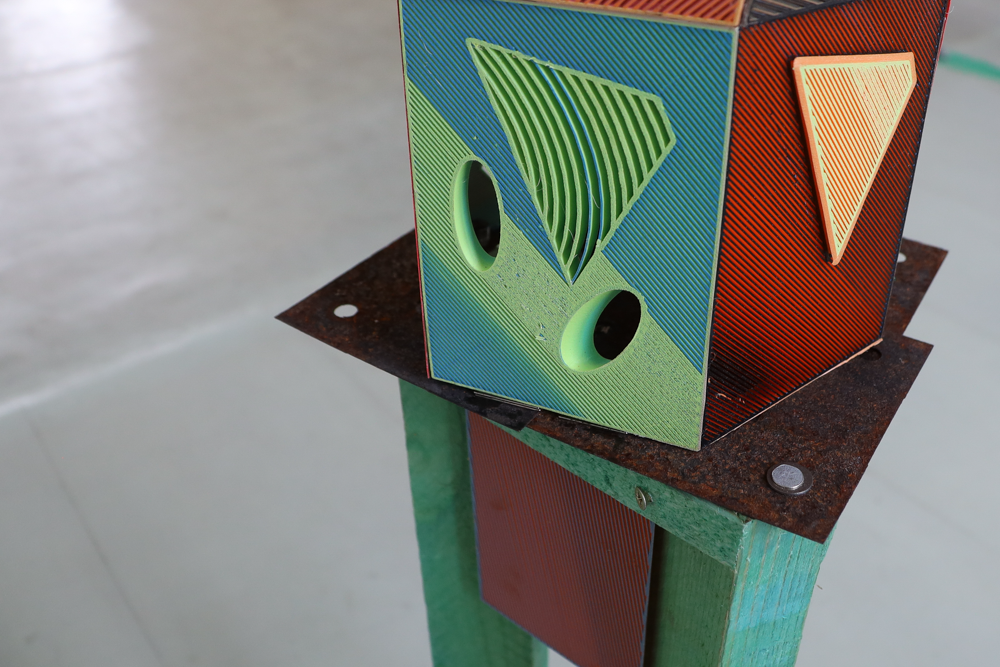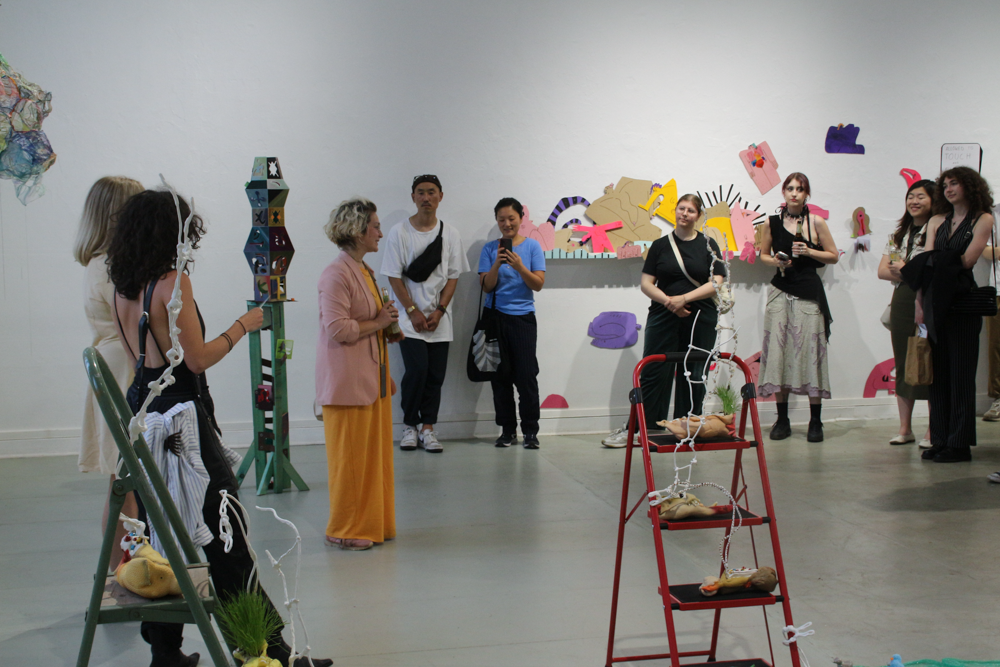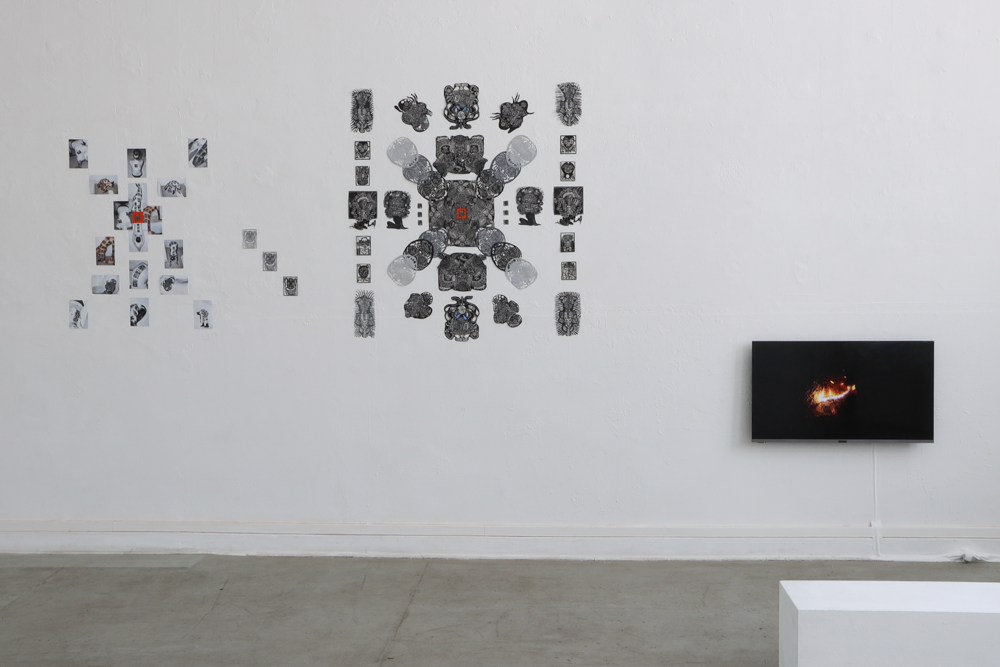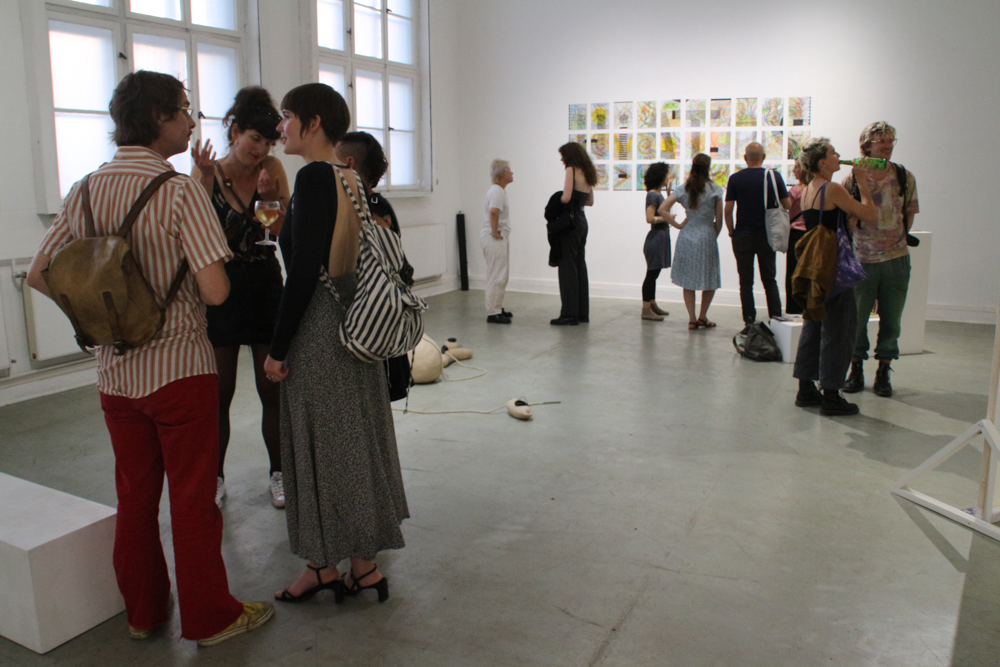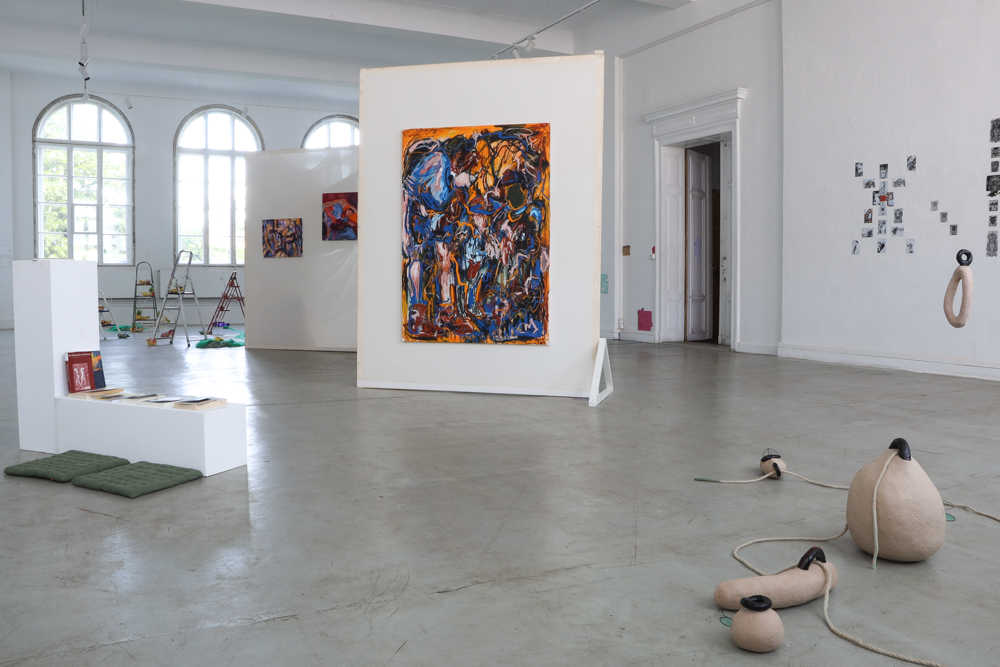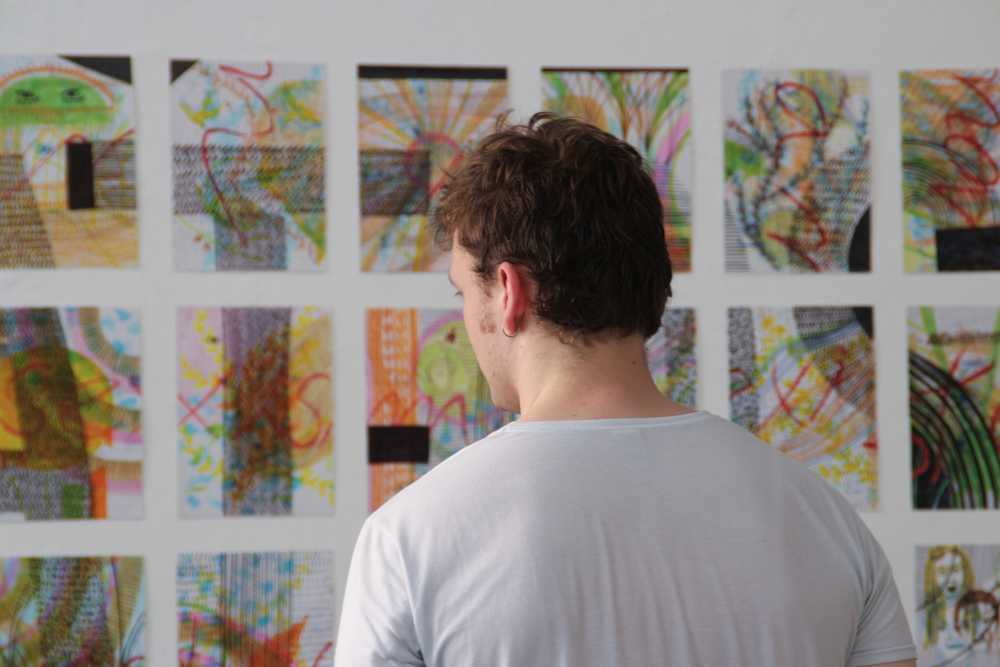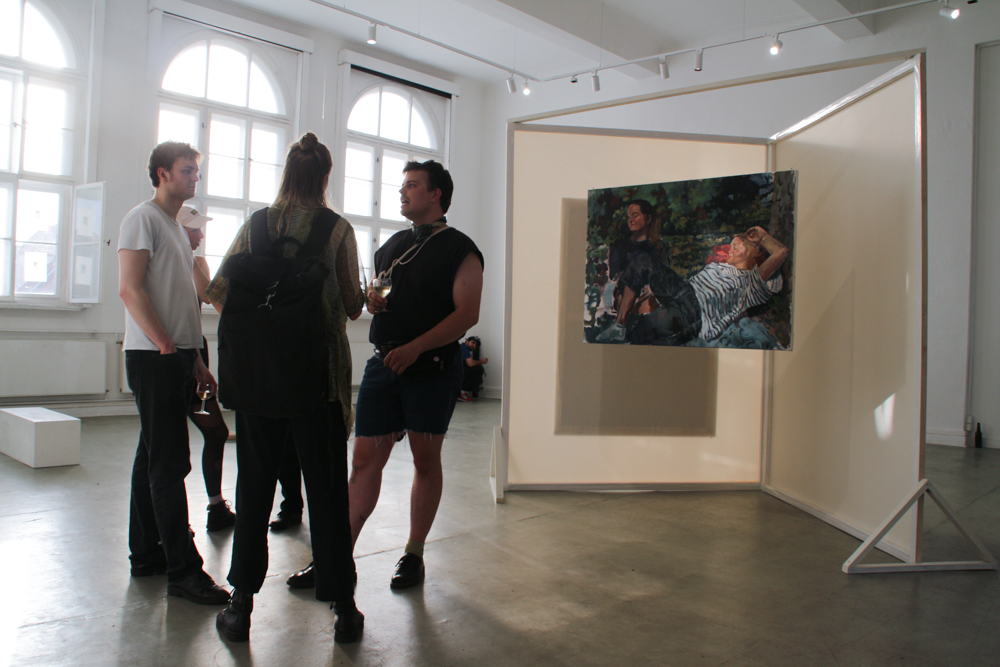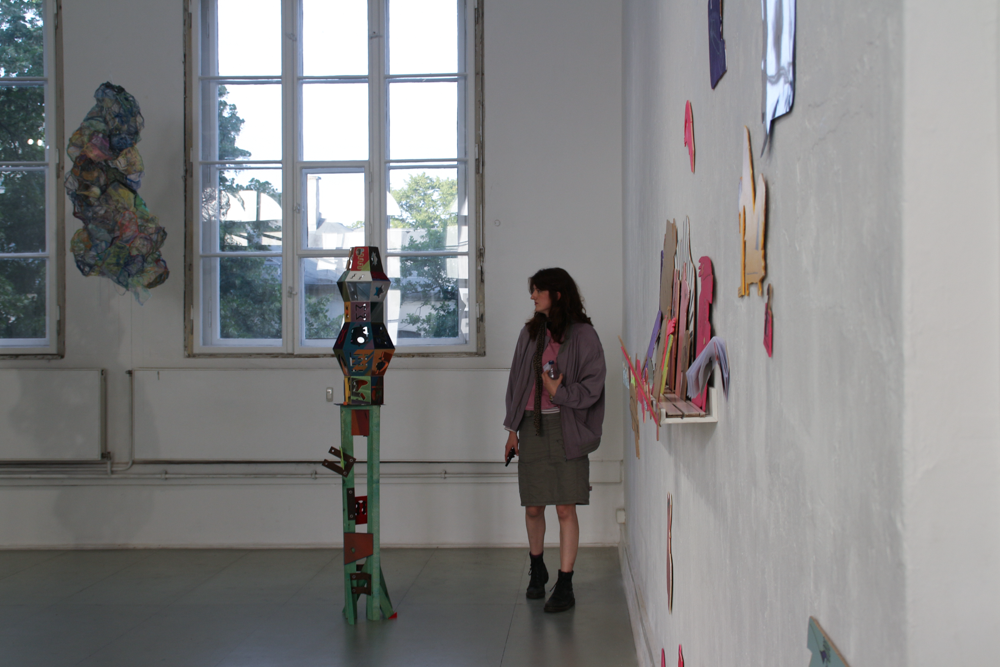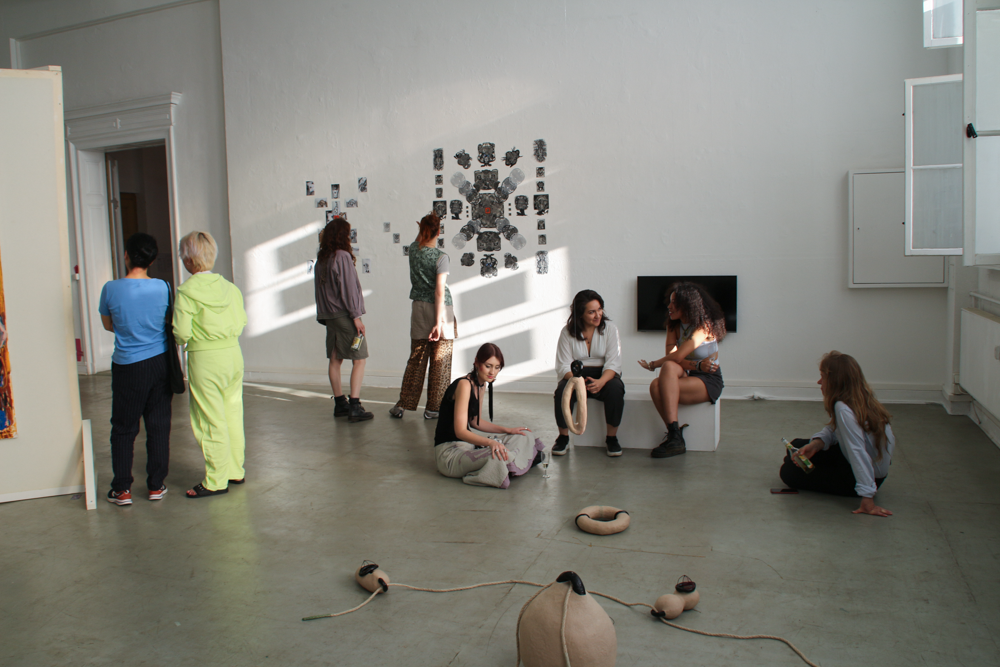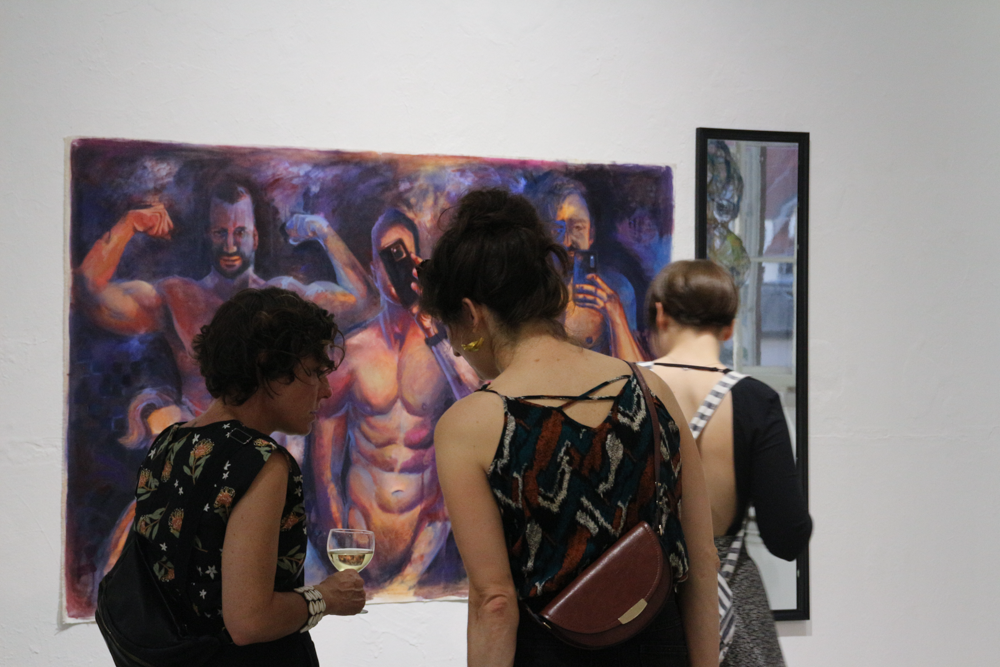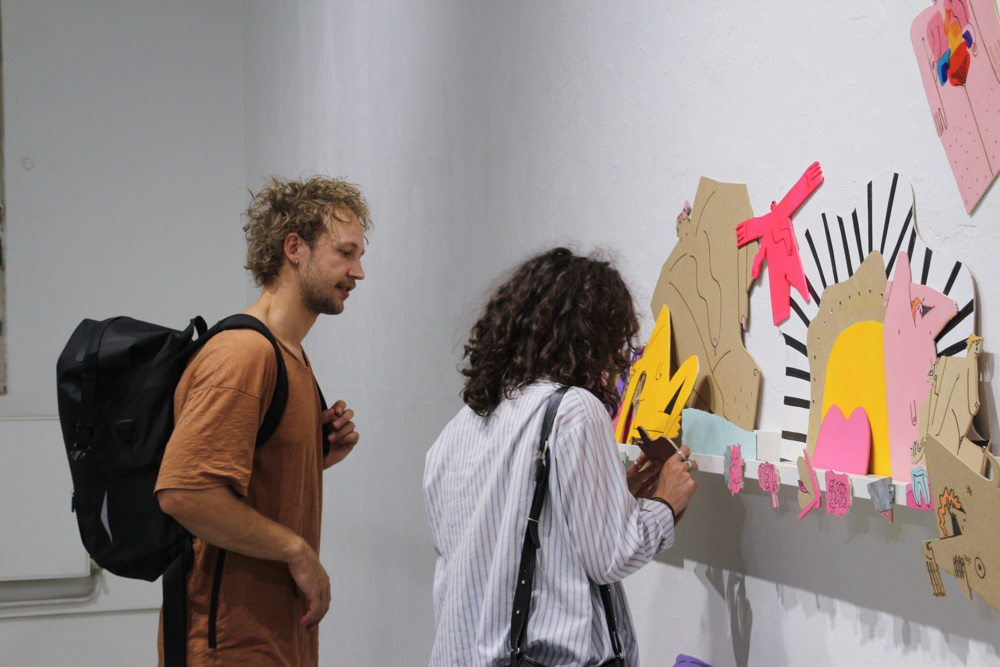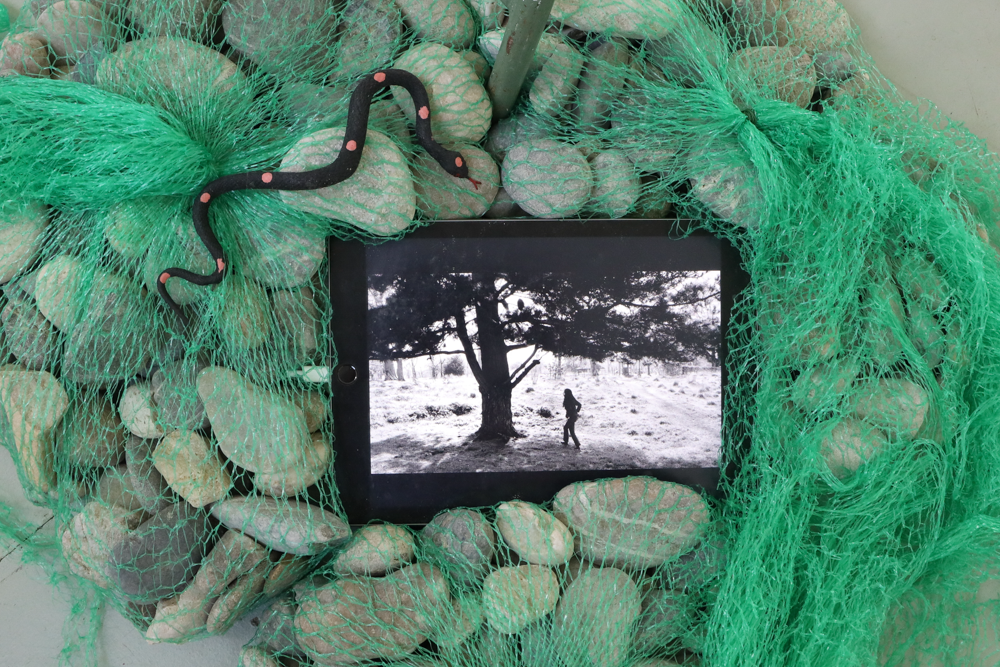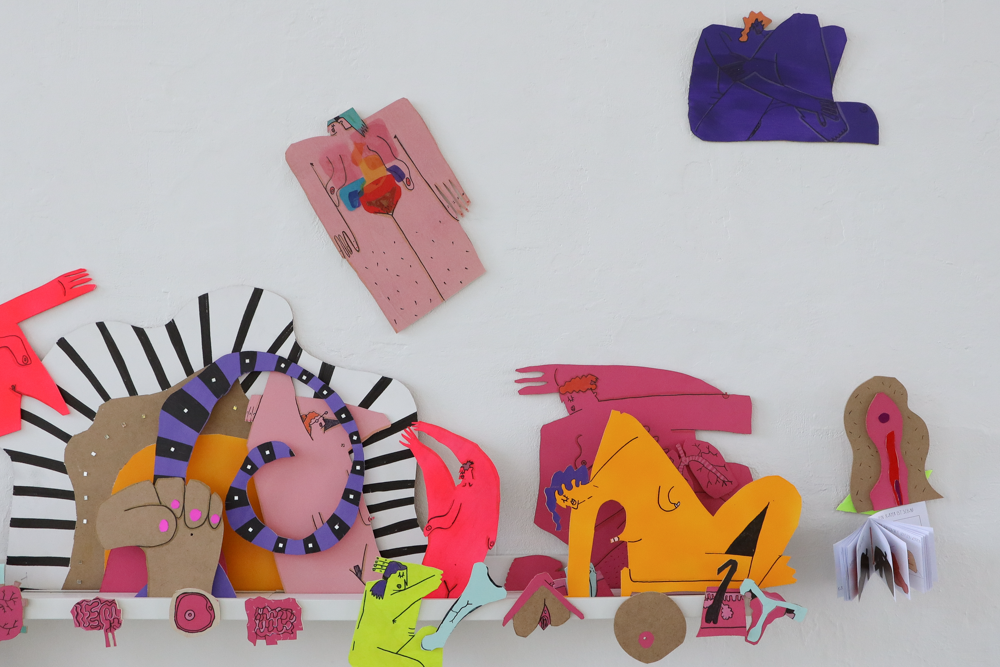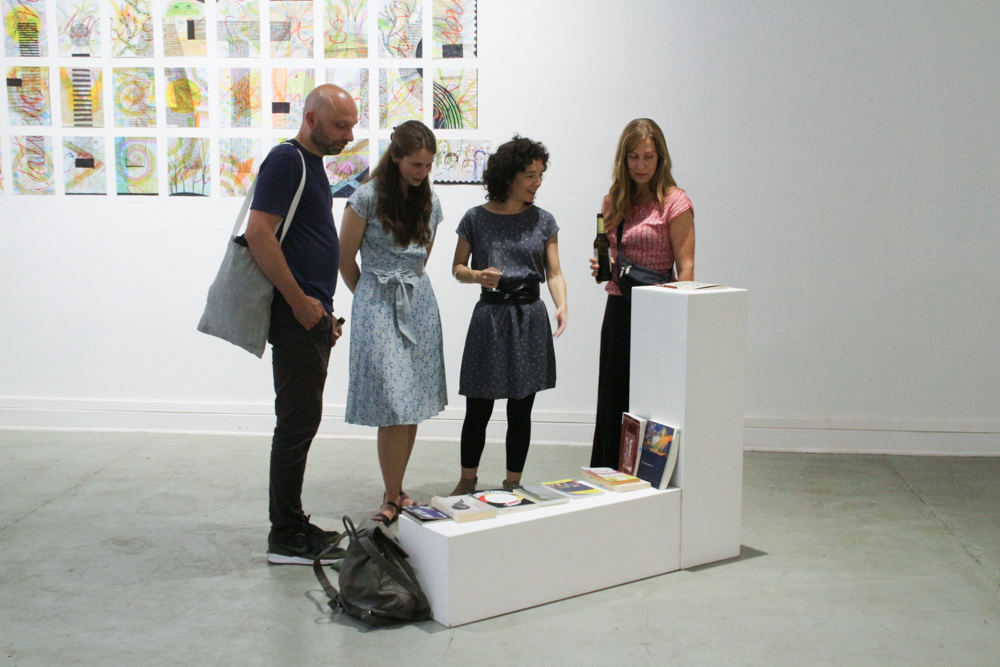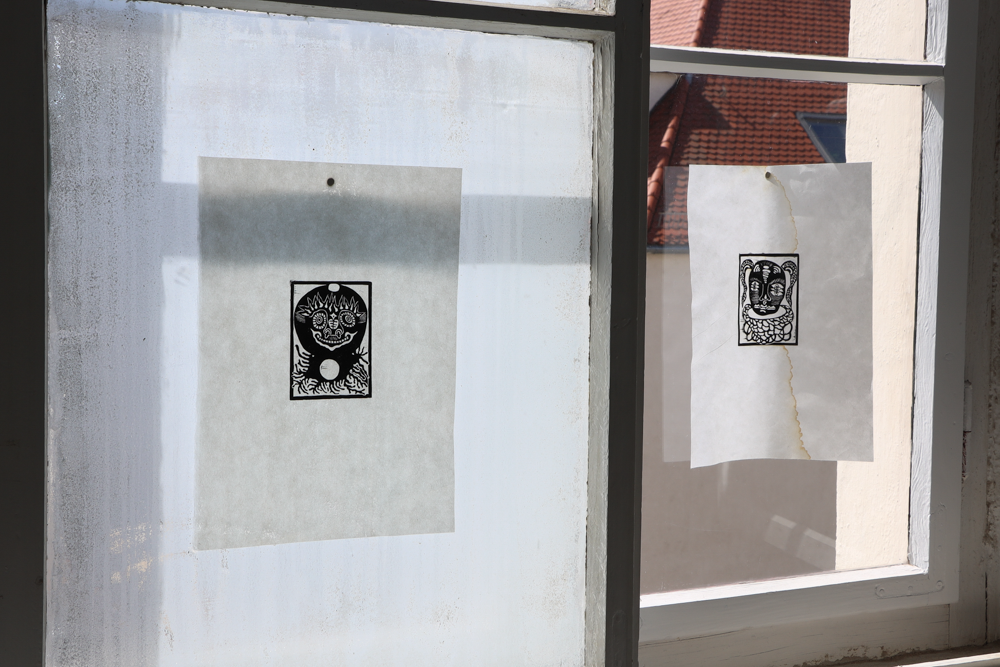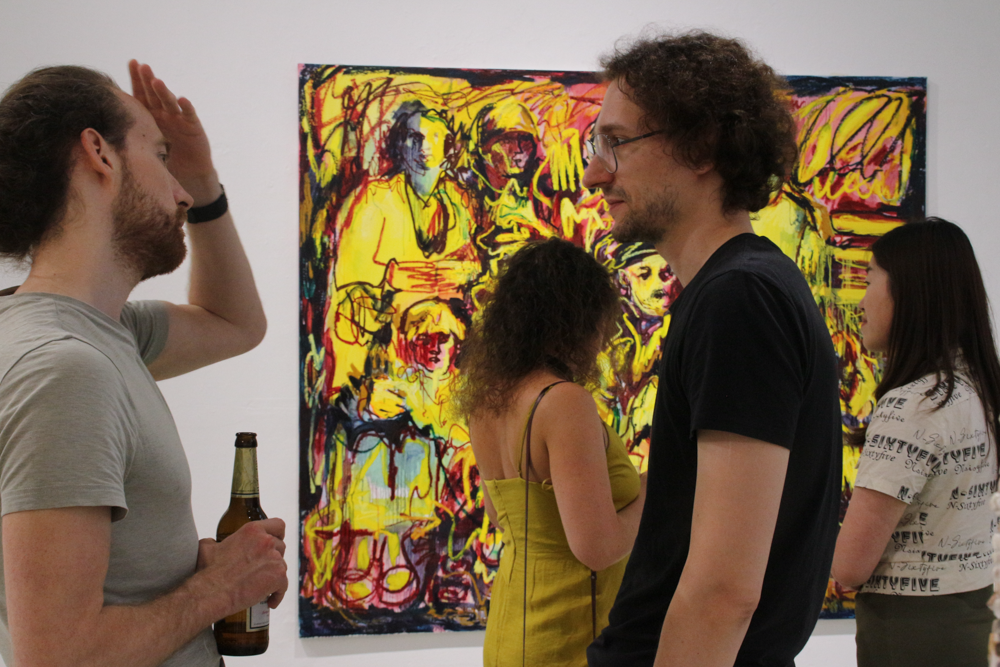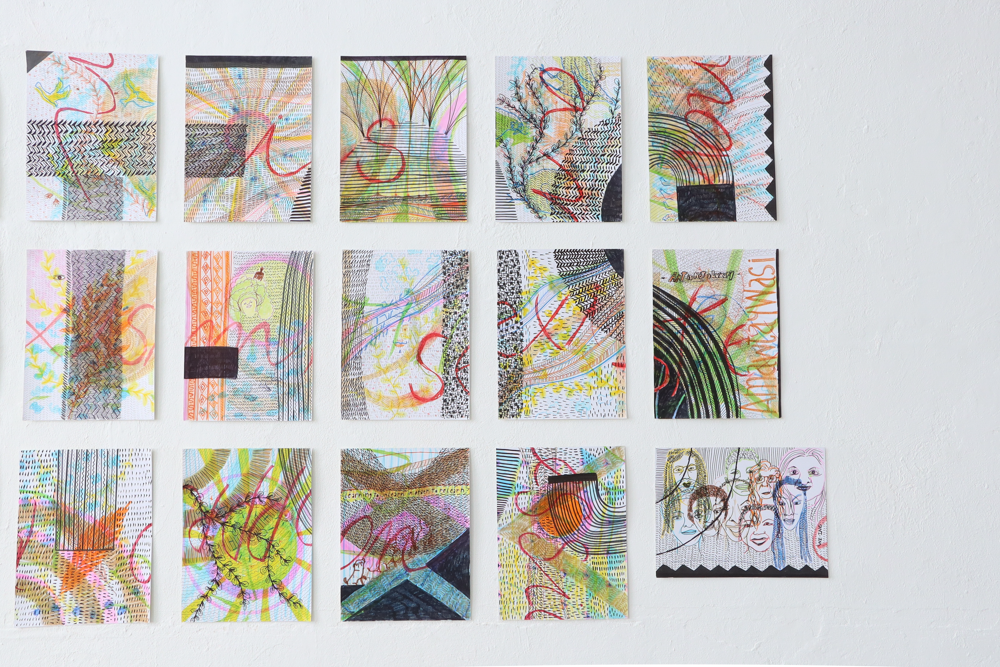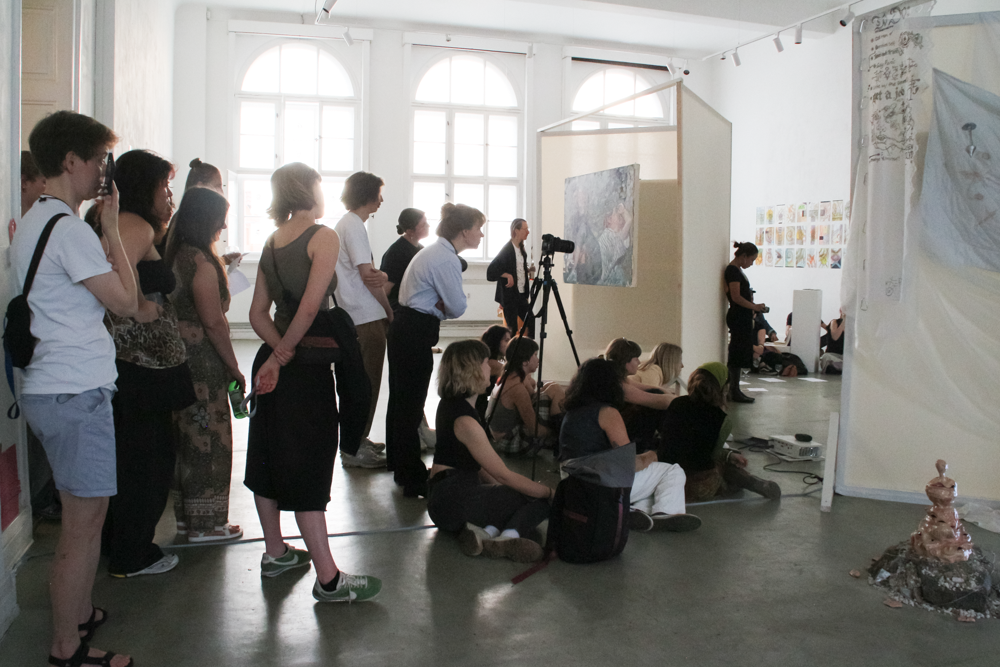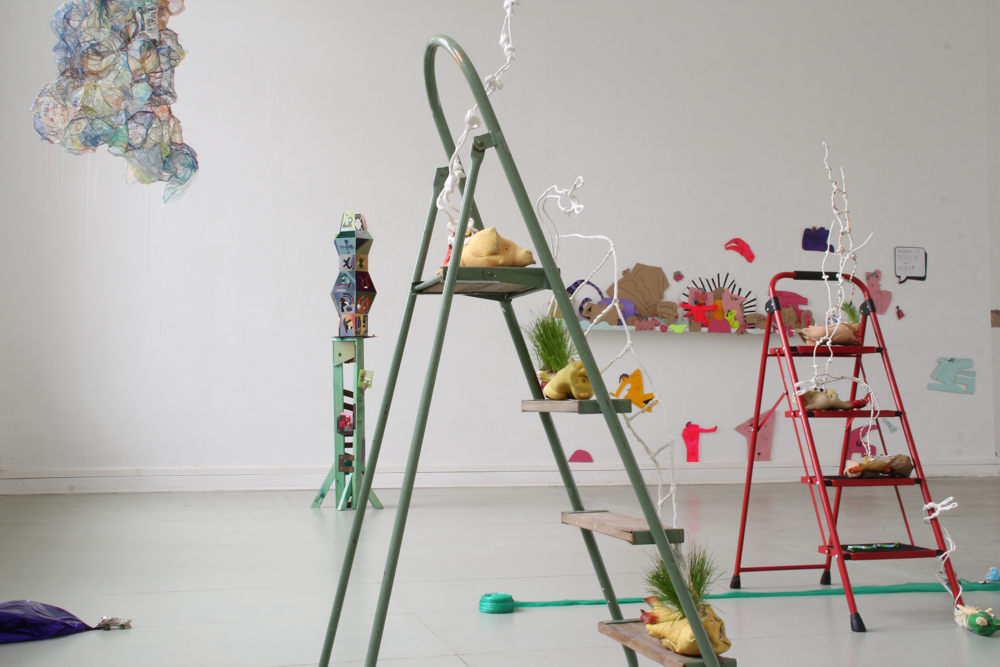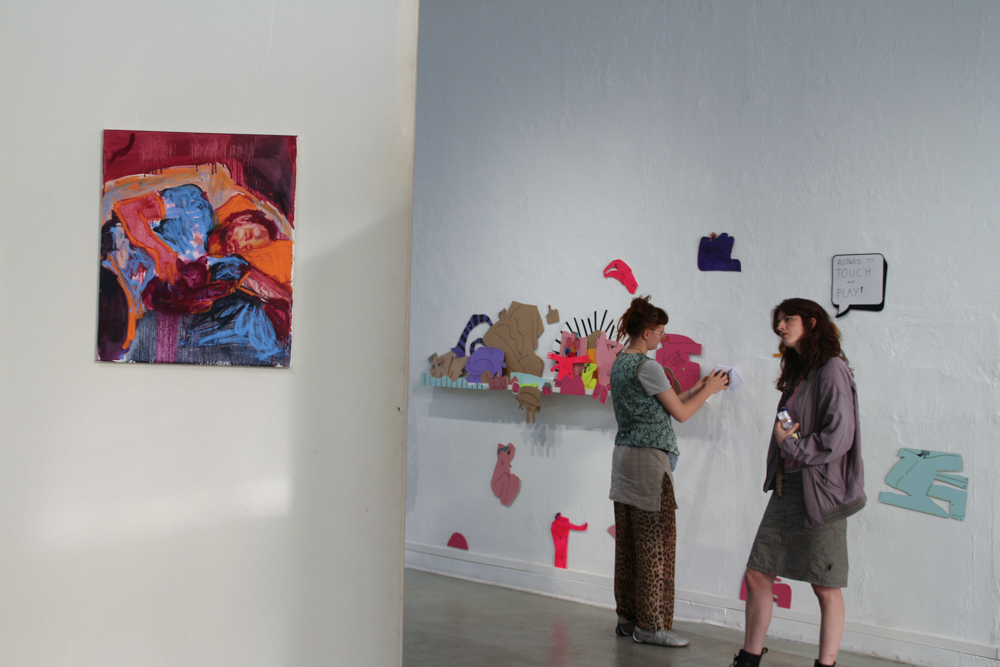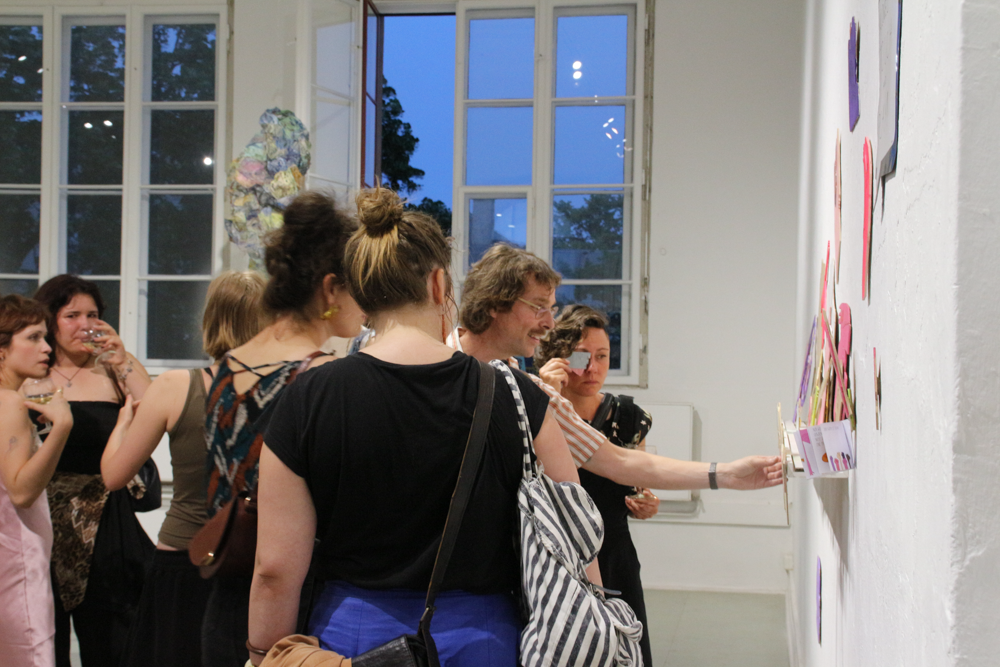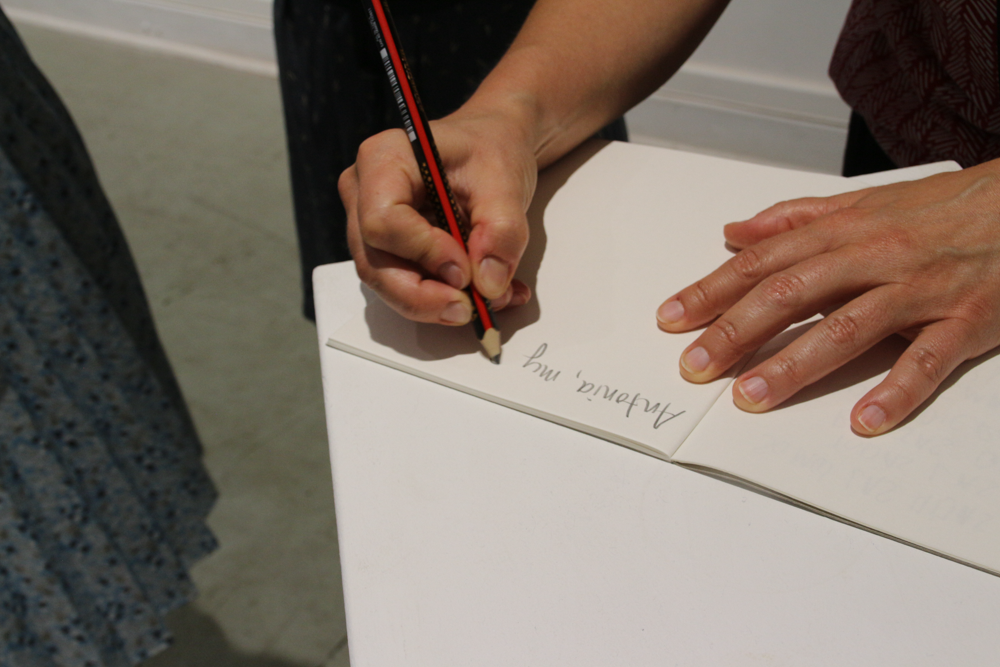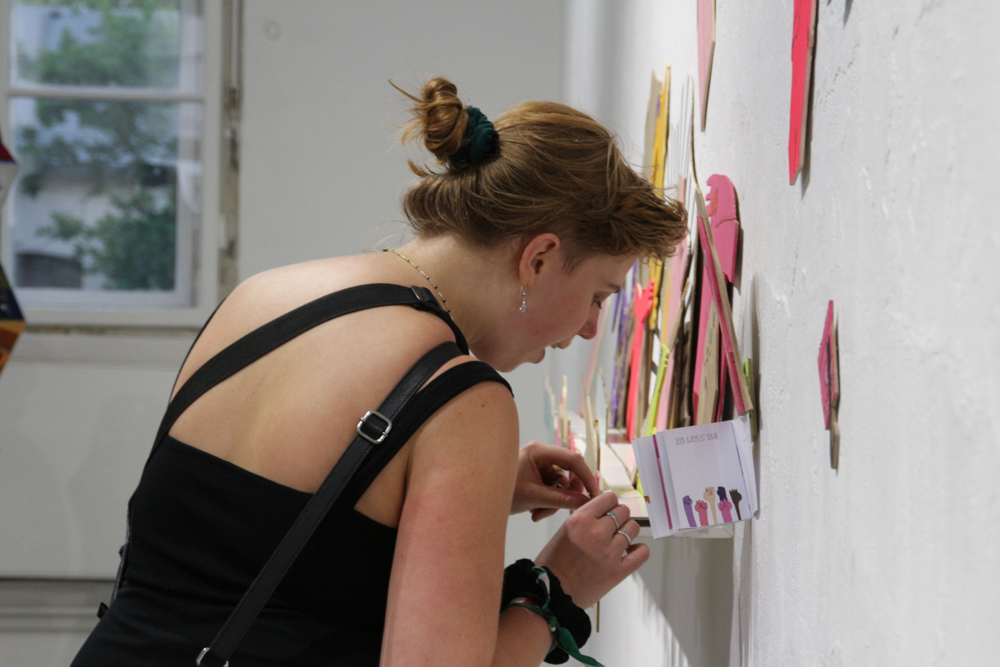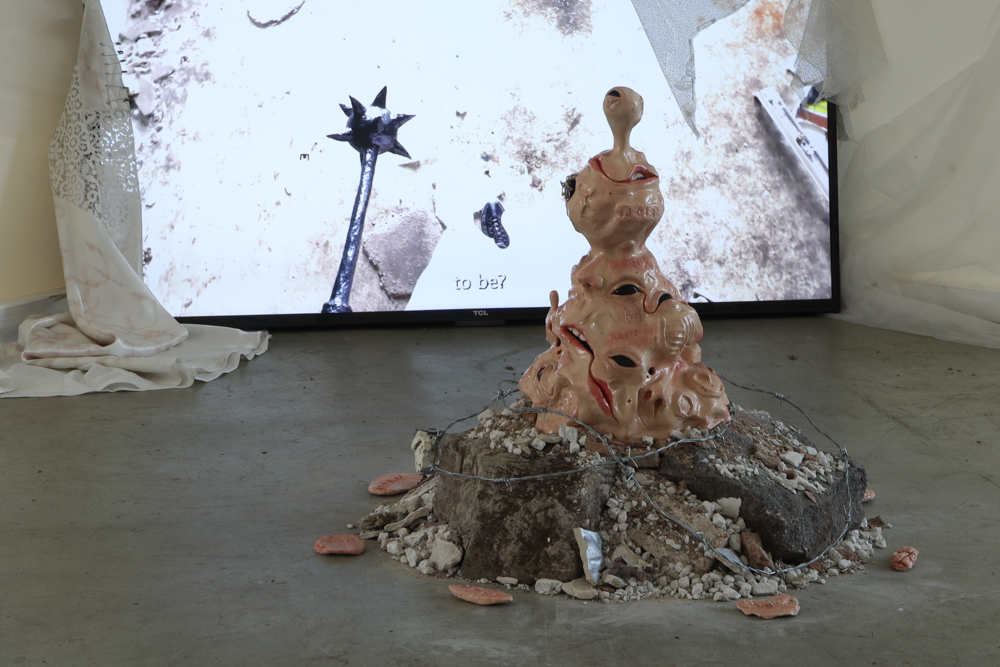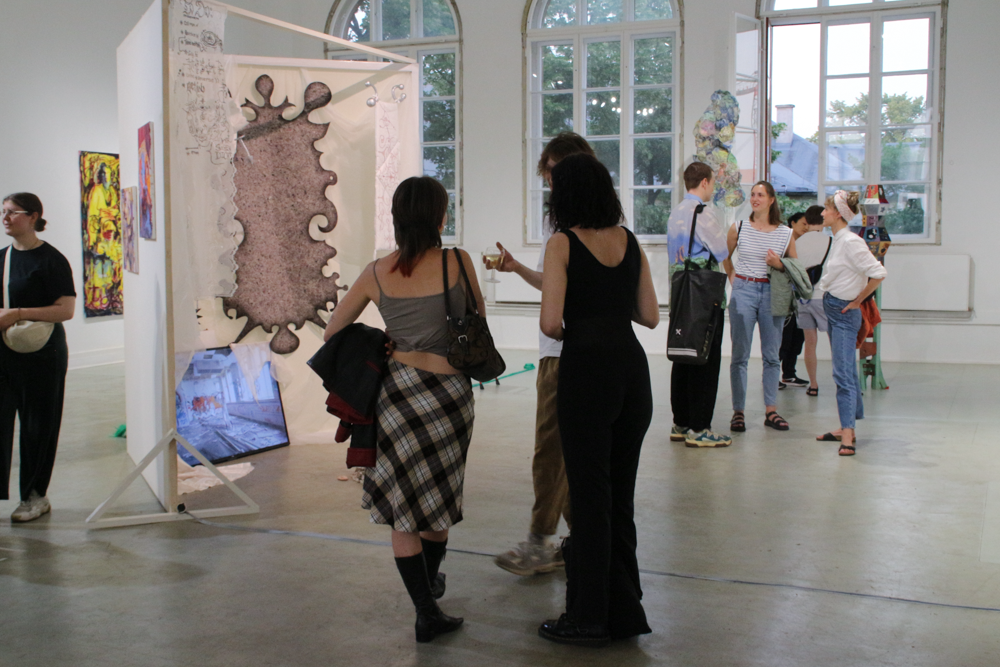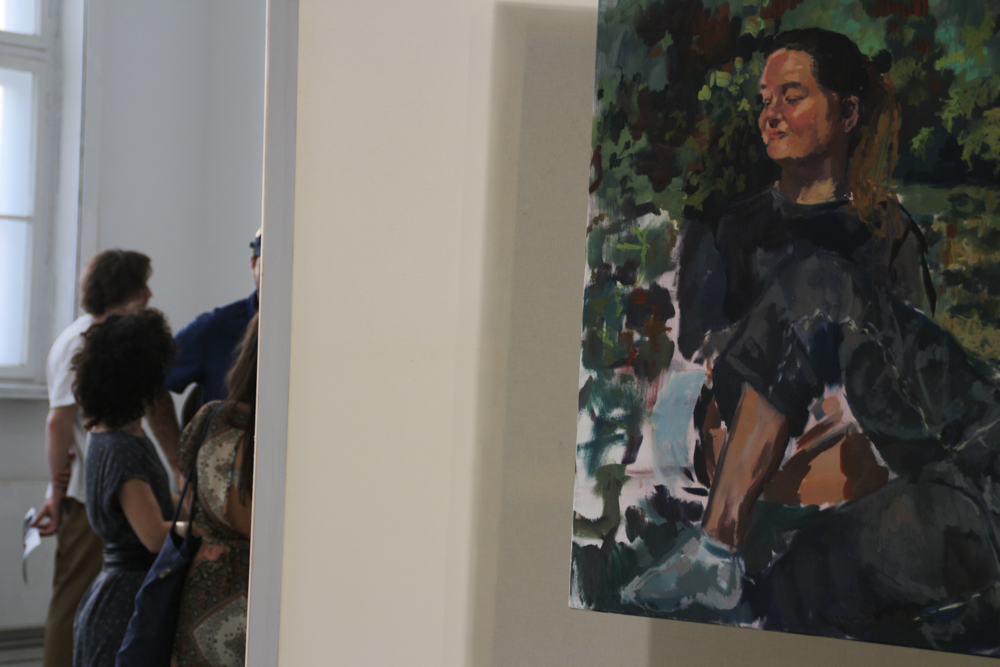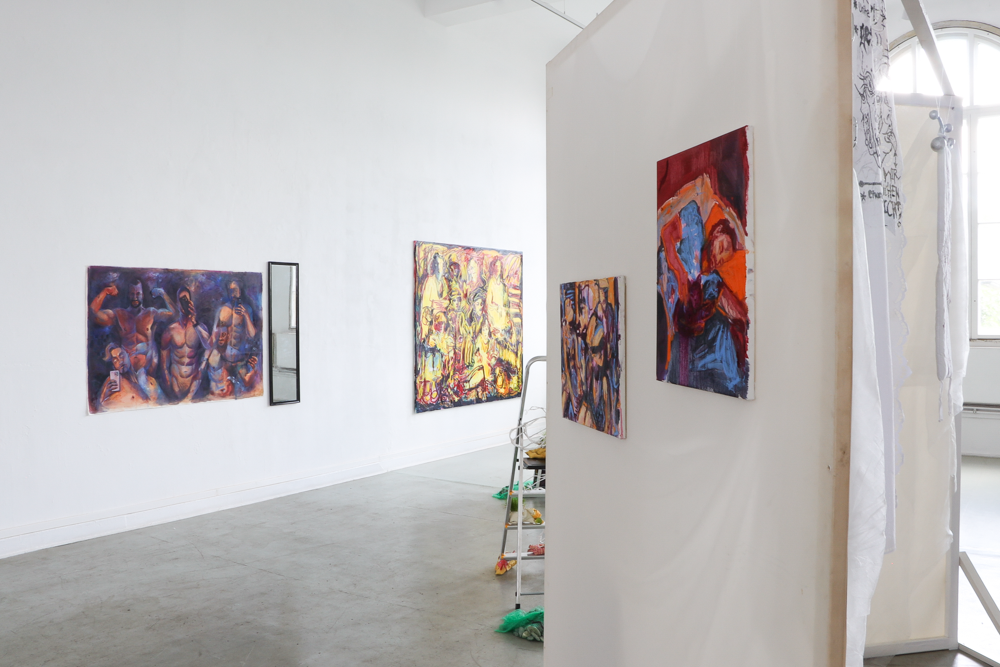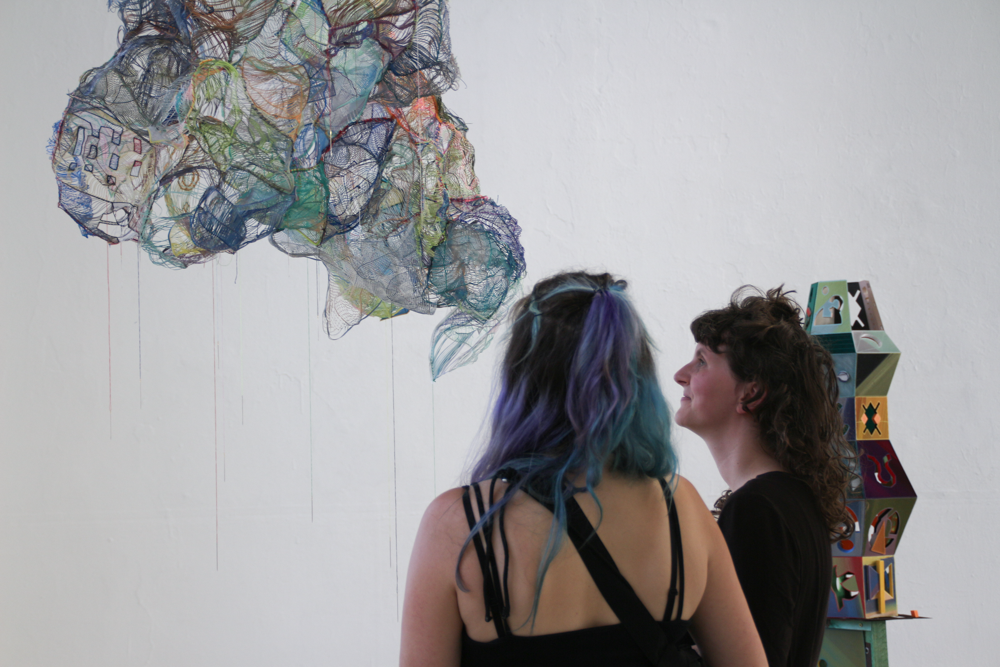The final exhibition of PKRD 59 compliments the journey built upon the groundwork laid in the initial chapter, windy HOME – presented during Tour de Franz. This concluding phase represents the culmination of the artist residency experience, involving the collaboration of artists and curators.
mute BODY aims to give voice to everyone and collectively create a lively ambiance to break the silence. The exhibition is beyond oblivion, at the interface of its outline. The carnal core seamlessly mutates within artistic realities and unifies with the formed abstract macrocosms of residency. This interconnected common narrative begins with the dissection of the concept of the BODY into its prime components. It is one of the basic and most complex elements of humankind’s existence. Our BODY is also our first home. To find one’s understanding, the individual reconstructs themselves and their corporeality in different ways and a volume of varying intensity.
images by PILOTENKUECHE
The exhibition is conceived as a ‘choreography’ of movements orchestrated by the artworks, interacting within and inhabiting the space. Navigating through the exhibit feels like embarking on a winding journey, guided by the interplay of scale between the art pieces and the distinctive aesthetics of the venue – a former school auditorium. This vital environment encourages viewers to actively participate in constructing collective memory and the narrative of PKRD59’s experience. It aims to cultivate a space that is not static, but rather dynamic and ever-evolving, offering a unique reception with each visit. In the framework of this comprehension, mute BODY will feature a series of performances.
connecting BODY
Through them, the artists will present their distinctive interpretations, each exploring and interacting with the exhibition space, in an attempt to continually deconstruct the boundaries of interpersonal interaction. This emphasis on mutability and interaction underscores the immersive and transformative nature of the experience. Likewise, the audience has the opportunity to redefine both place and thought.
One of the connecting elements between past and present in the mute BODY universe is the meta-exhibition, which also experiences drastic mutations throughout the process. It served as a conceptual mood board, collecting and visualizing the references and inspirations that were part of the artistic journey. The process began with curatorial research focused on understanding one’s HOME space. Its alignment includes defining individual bodily identities derived from it. Throughout the open studios, the focus extended beyond the artistic perspective of the residents.
BODY in view
Also the viewers, by integrating themselves into the space and questioning its understanding of privacy, transformed this living mind map. For the final stage, the meta undergoes its conclusive transformation. In it, a diffuse moment of solace inhabits the space and the matrix. The evanescence of sound reflects its nature – it testifies to life and its constant vibrations.
images by PILOTENKUECHE
Within the limitless motion and sonority, entities seek an understanding. Do the transformations affect those of others? Can they permeate one another? Will the end ever come – or perhaps, like human corporeality, it is continually evolving, metamorphosing into a spectrum of feelings and existence.
curators Mathilde Castaignède and Hanna Tokaj
mute BODY
Vernissage Fri 21 June 7-10 PM
Sat 22 – Wed 26 June 4-8 PM
Alte Handelsschule
Giesserstr 75
04229 Leipzig
International artists:
Emmeline Joy Morris (AU)
Lóa Sunnudóttir (IS)
J Jiang (CN)
Katya Granova (RU/UA/UK)
Anai Salem (IL)
Madison Hope Reid (CA)
Sudi Wang (CN/US)
Leonie Rittscher (UK/US)
Eunjin kim (KR)
Local artists:
Filipa Pontes (PT)
Elena Hüning (DE)
Curators:
Mathilde Castaignède (KÜSSE Berlin) (FR)
Hanna Tokaj (PL)
Interns:
Kintija Avena (LV)
Neena Bui (US)
Zeynep Ayta (TR)
Lisa Savchuk (UA)

